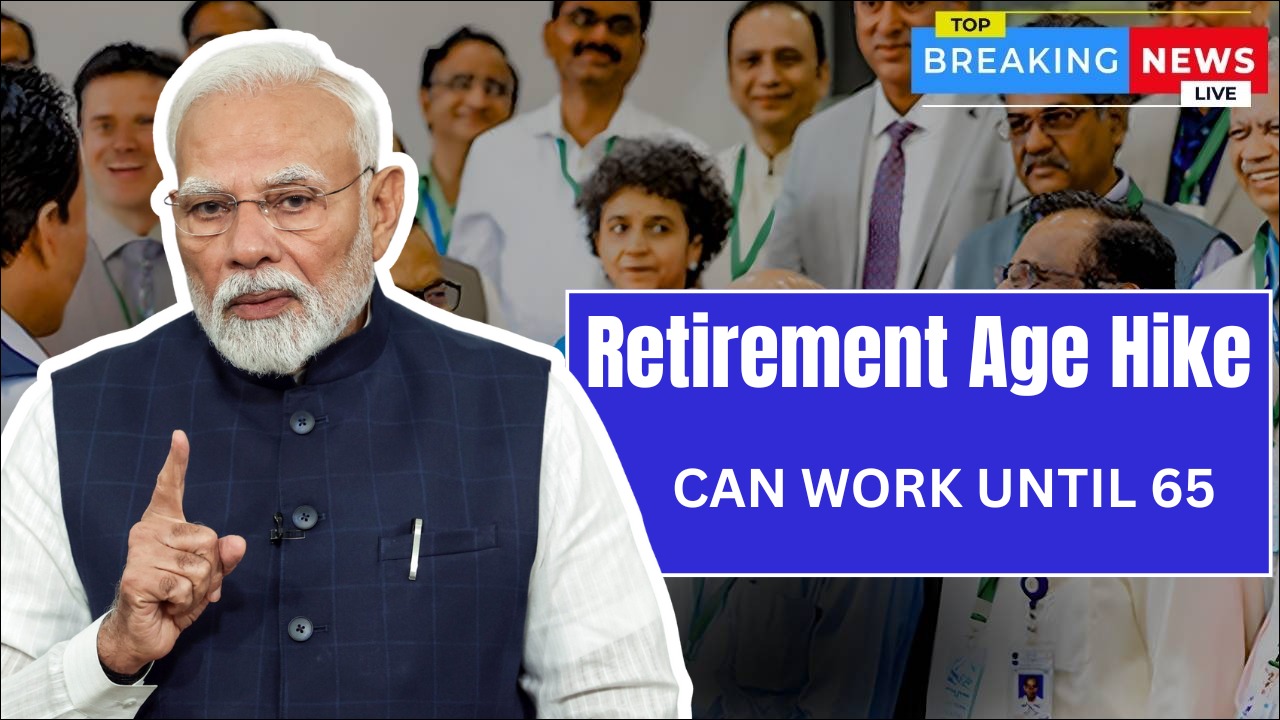The Old Pension Scheme (OPS) continues to be one of the most discussed retirement plans in India, especially after several states announced steps to reintroduce or modify it in 2025. Under this system, government employees receive a guaranteed lifetime pension after retirement, unlike the New Pension Scheme (NPS), which is market-linked. The 2025 developments around OPS have revived debates about financial security, government expenditure, and employee welfare.
Overview
| Particular | Details |
|---|---|
| Scheme Name | Old Pension Scheme (OPS) 2025 |
| Implemented By | Central and various State Governments |
| Beneficiaries | Central and State Government Employees |
| Pension Type | Defined Benefit (Guaranteed Monthly Pension) |
| Eligibility Date | For employees appointed before 1 January 2004 (central) or as per respective state rules |
| Monthly Pension | 50% of last drawn basic pay (plus applicable dearness relief) |
| Contributory | Non-contributory (employees do not contribute from salary) |
Purpose of the Scheme
The Old Pension Scheme provides a secure, fixed pension to retired government employees, ensuring financial stability after retirement. The main objectives are:
- To offer guaranteed post-retirement income.
- To protect pensioners from inflation through Dearness Relief (DR) revisions.
- To reduce uncertainty from market-linked investments under NPS.
- To strengthen long-term social security for government staff.
Key Features of Old Pension Scheme 2025
- Lifetime Guaranteed Pension: Employees receive 50% of their last drawn basic salary as pension every month.
- No Employee Contribution: Unlike the NPS, employees under OPS do not contribute from their salary.
- Family Pension: In case of death, the spouse receives 50% of the pension as a family pension.
- Dearness Relief (DR): Pension increases automatically with DA hikes announced by the government twice a year.
- Gratuity & Commutation: Retirees are entitled to a lump-sum gratuity and can commute part of their pension for upfront payment.
- Tax Benefits: Pension income is partially exempt under applicable sections of the Income Tax Act.
- Applicable Employees: Central employees appointed before 1 January 2004 and state employees as per respective cut-off dates.
States Reintroducing Old Pension Scheme (as of 2025)
| State | Status | Implementation Year |
|---|---|---|
| Rajasthan | Fully implemented | 2022 |
| Chhattisgarh | Fully implemented | 2022 |
| Himachal Pradesh | Implemented | 2023 |
| Punjab | Approved | 2023 |
| Jharkhand | Approved in principle | 2024 |
| Tamil Nadu | Under review | 2025 |
| Odisha | Considering partial reintroduction | 2025 |
Eligibility Criteria
- Appointment Date: Employee must have joined government service before 1 January 2004 (for central services) or as per the cut-off date set by the respective state.
- Employment Type: Only permanent government employees are eligible.
- Pensionable Service: Minimum 10 years of service is required for pension entitlement.
- Retirement Age: Generally 60 years, subject to department-specific rules.
Pension Calculation Formula
Pension = 50% of (Last Drawn Basic Pay + Grade Pay)
Example:
If the last drawn salary (basic + grade pay) = ₹70,000
Then pension = ₹35,000 + applicable Dearness Relief (DR)
Difference Between Old Pension Scheme and New Pension Scheme
| Feature | Old Pension Scheme (OPS) | New Pension Scheme (NPS) |
|---|---|---|
| Type | Defined benefit | Market-linked defined contribution |
| Contribution | No contribution by employee | Employee + Government contribute monthly |
| Return Guarantee | Fixed (50% of basic pay) | Depends on market performance |
| Family Pension | Available | Available but variable |
| Dearness Relief | Full DR benefits twice a year | Linked to investment value |
| Portability | Limited | Fully portable between jobs |
| Taxation | Pension partly taxable | Partial withdrawal exempt, rest taxable |
2025 Updates
- The Union Government has not yet reintroduced OPS for central employees but is reviewing the financial impact through a new Pension Reform Committee.
- Several states, including Odisha and Tamil Nadu, have initiated studies to evaluate the cost and feasibility of reviving OPS.
- Employee unions continue to demand restoration, citing inflation and insufficient retirement income under NPS.
Benefits of the Old Pension Scheme
- Guaranteed lifetime income ensuring financial peace of mind.
- Automatic inflation protection through biannual Dearness Relief hikes.
- Support for dependents through family pension benefits.
- No market risk compared to the NPS’s market-linked returns.
- Simple and predictable post-retirement planning.
Challenges and Concerns
- Fiscal Burden: Non-contributory pensions increase long-term government expenditure.
- Sustainability: Future financial liability for states could rise significantly.
- Limited Portability: OPS is applicable only to government service, not transferable to other jobs.
- Exclusion of New Employees: Those joining after 2004 remain under NPS, leading to inequality among staff.
Why It Matters
The Old Pension Scheme debate highlights the balance between employee welfare and fiscal discipline. While OPS provides guaranteed income and security, governments must also manage budgetary sustainability. The 2025 discussions may pave the way for a hybrid model, combining guaranteed minimum pensions with NPS benefits.
Final Takeaway
The Old Pension Scheme 2025 continues to be a cornerstone of India’s retirement policy debate. While some states have already restored OPS, the Centre remains cautious about nationwide implementation. Employees should stay updated on state notifications and pension eligibility to ensure they receive full benefits as per revised rules.
FAQs
Q1. Who is eligible for the Old Pension Scheme in 2025?
Government employees who joined service before 1 January 2004 (or state cut-off date) are eligible.
Q2. Is OPS available for new government employees?
No, new recruits after 2004 are covered under the New Pension Scheme (NPS).
Q3. Which states have brought back the Old Pension Scheme?
Rajasthan, Chhattisgarh, Himachal Pradesh, and Punjab have fully reintroduced it, while others are considering implementation.

